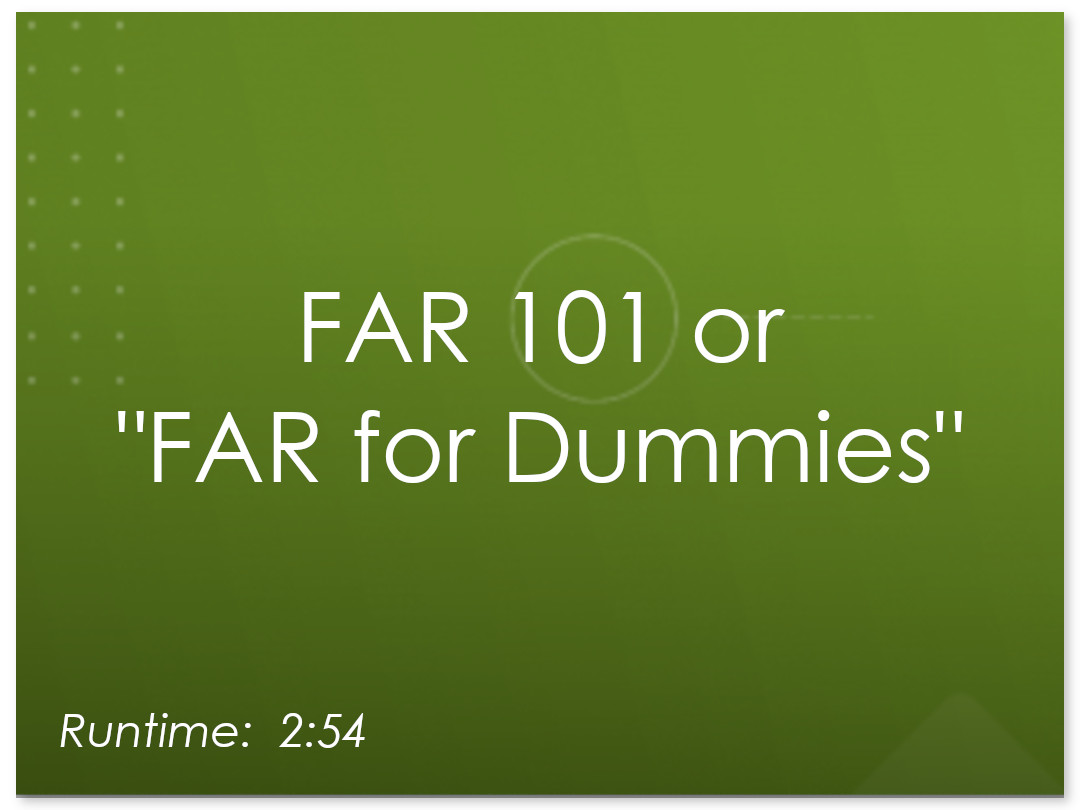FAR Requirements: FAR 12 and FAR 15
Government contracts are subject to a slew of regulations which govern acquisitions by executive branch agencies. These regulations are located in the Federal Acquisition Regulations or FAR. The FAR requirements ensure that the government, and therefore, taxpayers, are getting the best value for their money by delineating a set of rules that govern solicitation and award of non-competitive government contracts.
If you want to win government contracts, you’ll need to be familiar with FAR 12 and FAR 15:
FAR 12 is much easier than FAR 15, and it is this simplicity that is enticing to contractors and often leads to audit findings.
FAR Part 12: Acquisition of Commercial Products
FAR 12 ensures that contractors and the government avoid a time-consuming and formal procurement process for commercial products that are already sold “in substantial quantities in the commercial marketplace,” FAR 12 is for procuring products that are:
- of a relatively small value, or
- already available in general commerce. For commercial products which adhere to the definition set forth in FAR 2.101, the purchasing process is exempted from some of the traditional documentation requirements prescribed under FAR 15.
%
of government contractors find managing compliance requirements one of their top challenges. (Source: Grant Thornton)
average number of active suppliers managed by government contractors (Source: Ardent Partners)
%
of government contractors struggle with data visibility and reporting challenges. (Source: Deltek)
%
longer time spent on manual procurement processes versus using an automated system. (Source: The Hackett Group)
FAR Part 15: Contracting by Negotiation
For unique goods that are not readily available in the market, a different process is needed to determine if the product pricing is fair and reasonable, and that the goods are of sufficient quality and value to meet the government’s needs. This different process is detailed in FAR 15 and outlines the rules for negotiating, evaluating, and awarding such government contracts.
Even though a more rigorous evaluation process is necessary for these types of non-commercial items, FAR Part 15 still tries to lessen the complexity of winning a government contract. The process begins with inviting potential vendors into a two-way communication with the government. Each vendor offers preliminary RFPs that inform the government’s final RFP requirements. The playing field is then narrowed to a smaller group of vendors who can submit proposals. This process helps lessen the burden of preparation and review, and ensures that sufficient value is obtained by the government.

Sign up for our monthly newsletter to receive procurement-related articles, industry news, regulatory updates, and more.
FAR Requirements: Documenting Under FAR 12 and FAR 15
Whether providing goods under FAR Part 12 or FAR Part 15, contractors face significant documentation hurdles, which apply to all tiers of government contracts, and prime contractors must ensure that their sub-contracts meet these standards.
Under FAR 12, contractors must provide sufficient evidence that the item meets the FAR’s definition of “commercial.” There’s no stated minimum value that applies to this FAR requirement.
Under FAR 15, for awards equal to or greater than $2 million of non-commercial items or services, contractors must provide certified cost or pricing data. The government (or a Prime Contractor working on the government’s behalf) will review and validate every element of cost in a vendor’s proposal.
Using a systematic approach, such as the one SpendLogic provides, helps vendors tackle these documentation burdens. Learn how by scheduling a quick, 15-minute demo, and see how we take the pain out of procurement documentation.




 SpendFile Documentation Folders
SpendFile Documentation Folders